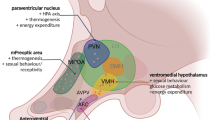Abstract.
Rationale: Corticotropin-releasing factor (CRF) and urocortin (Ucn) belong to the CRF-related family, share a high degree of structural homology and bind to CRF receptors. However, compared with CRF, Ucn was shown to display either weaker or similar anxiogenic-like effects in vivo. Objective: To compare the anxiogenic-like responses of rats injected intracerebroventricularly (ICV) with different doses of either rat/human CRF (r/hCRF) or rat Ucn (rUcn) at different intervals after injection. Methods: Rats were tested on three validated paradigms of emotional behavior [i.e. elevated plus-maze (EPM), defensive withdrawal (DW) and conflict test (CT)] 5 and 30 min after treatment. Results: In the EPM test only r/hCRF, but not rUcn, produced anxiogenic-like effects at the dose of 1.0 µg, when the peptides were injected 5 min before testing. At 30 min after injection, both peptides caused a significant reduction of open arms exploration, rUcn being effective at 0.01 µg. In the DW test both peptides were equally potent in decreasing the exploratory behavior and increasing the time spent in the chamber at the dose of 1.0 µg when tested 30 min after injection. In the CT both rUcn (0.25–1.0 µg) and r/hCRF (0.75–1.0 µg) decreased significantly the responding in the punished component. However, rUcn reduced food responding also in the unpunished component possibly due to its powerful anorectic activity. Conclusions: Comparison of anxiogenic-like activities of r/hCRF and rUcn at doses up to 1.0 µg revealed striking differential effects that depended on the time of testing after ICV peptide injection, and on the paradigm of anxiety used. These results suggest that the onset of r/hCRF and rUcn actions related to behavioral responses to anxiety is likely to depend on brain peptide-specific mechanisms including binding properties to CRF-receptors, differential distribution to specific functional brain sites and the distribution and effectiveness of binding-protein interactions.
Similar content being viewed by others
Author information
Authors and Affiliations
Additional information
Electronic Publication
Rights and permissions
About this article
Cite this article
Spina, .M., Merlo-Pich, .E., Akwa, .Y. et al. Time-dependent induction of anxiogenic-like effects after central infusion of urocortin or corticotropin-releasing factor in the rat. Psychopharmacology 160, 113–121 (2002). https://doi.org/10.1007/s00213-001-0940-y
Received:
Accepted:
Issue Date:
DOI: https://doi.org/10.1007/s00213-001-0940-y




